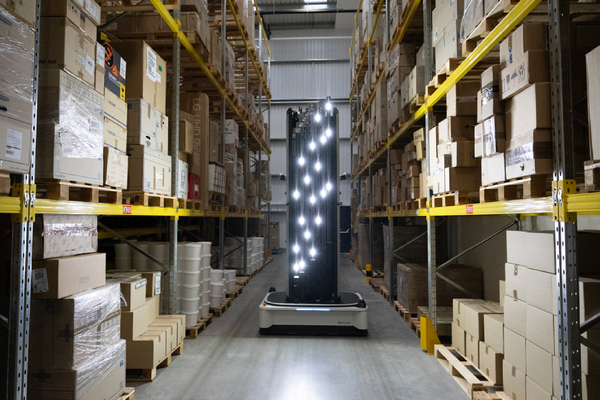The Expert View: Transforming IT Service Delivery with Next-Gen AI
Sponsored by Freshworks
Why focusing on outcomes, not hype, is the key to AI’s role in IT service management
It’s a familiar scenario. Senior leaders declare that artificial intelligence must be embedded across the organisation – but offer little guidance on how or where to start. According to Freshworks Lead Account Executive Giovanni Manderioli, this gap between aspiration and execution is now the norm in IT service delivery.
“Everyone’s facing similar problems,” he told a recent Business Reporter Breakfast Briefing at the Goring Hotel in London. “There’s pressure from the top to ‘do AI,’ but most teams are still trying to figure out what that means in practice.”
IT leaders from banking, healthcare, government and professional services gathered to examine where generative and traditional AI tools might genuinely transform IT service management. The conversation revealed a shared desire to improve resilience, triage demand, and “do more with less”, but also a sober recognition that risks, readiness and resourcing gaps must be addressed first.
Complexity, cost and culture
One of the biggest barriers to AI adoption in IT service delivery is the persistence of legacy complexity. This is especially acute in sectors like financial services, where a few minutes of downtime can quickly escalate. “People notice fast when banking services go offline,” said one attendee. “You might get away with a short outage, but anything longer, and your contact centres get swamped.”
Budget pressures are intensifying the problem. “We’re being challenged to get the best out of technology with shrinking budgets,” said another participant. “We’re hoping AI can help us achieve that.” In healthcare, by contrast, the challenge isn’t primarily financial but behavioural: “It’s not about getting the best out of the technology, it’s the challenge of getting people to use it in the first place.”
Elsewhere, public-sector leaders described a lack of defined processes. “We don’t really have a service management process to speak of,” admitted one attendee. “So AI isn’t going to fix things by itself. We need to clarify what we’re trying to do.”
Identifying use cases
Despite the obstacles, most participants saw near-term value in using AI as a triage tool, handling simple user contacts and escalating complex issues to humans. In public services, for instance, IT teams supporting everything from property management to social care could use AI to classify incoming requests more efficiently.
In healthcare, participants saw potential for patient-facing applications. “We don’t have a service desk for patients,” said one. “But AI could make it easier to cancel appointments or handle other simple admin tasks that are currently handled by phone.”
Others reported early experiments with AI in strategy-setting. “We had an AI read through research papers and accreditation documents, then use that to suggest objectives for our IT service roadmap,” said one manager. “It didn’t come up with anything outlandish, but it gave us ideas we hadn’t thought of.”
Still, most use cases remain exploratory. “We’ve got use cases coming out of our ears,” admitted one IT lead, “but we’re not putting any of them in front of customers yet.”
Risks around readiness and data
That caution is rooted in both technical and organisational concerns. Many teams questioned whether their networks, and their IT service desks, were equipped to handle the surge in demand that AI tools might trigger. “The organisation wants AI to help us do more with less,” said one participant. “But can we handle queries from users whose AI tools are working as they expect? We don’t necessarily have the resources, or even the expertise in these systems.”
Data quality is another concern. “You still need a human in the loop,” said one participant. “AI can hallucinate. It can be biased. If the data’s outdated or incomplete, you’re just automating the wrong answers.” Others raised fears about generative AI leaking confidential information. “If you put a genAI tool in front of customers, you increase the risk that someone will get sensitive information out of it - either maliciously or unintentionally.”
The challenge of testing these tools is also a sticking point. “You don’t always get the same answer twice,” said one attendee. “So how do you know if it’s working?”
Outcomes over optimism
The spread of “shadow AI” tools was another risk raised, with one participant describing how staff had begun bringing their own AI bots into company meetings. “They didn’t realise it was something they had signed up for. They thought it was IT,” said the participant. “We didn’t approve them. And we had no way of knowing what happened to the data these bots recorded.”
Despite these concerns, most participants remained optimistic about the potential of AI, provided it is approached with clarity and purpose. “AI is just an enabler, not a silver bullet,” said one attendee. “If you don’t understand the problem, you won’t get the right tool. You must focus on where the inefficiencies are.”
That focus on outcomes, rather than abstract technology goals, was echoed by Manderiolo. “It was an enlightening conversation,” he said. “The advice I’d give to anyone is: start with the problem. What needs solving? Then look at how AI can help. Pick one problem and get started.”
To learn more, please visit: www.freshworks.com

Business Reporter Team
Most Viewed
Winston House, 3rd Floor, Units 306-309, 2-4 Dollis Park, London, N3 1HF
23-29 Hendon Lane, London, N3 1RT
020 8349 4363
© 2025, Lyonsdown Limited. Business Reporter® is a registered trademark of Lyonsdown Ltd. VAT registration number: 830519543





